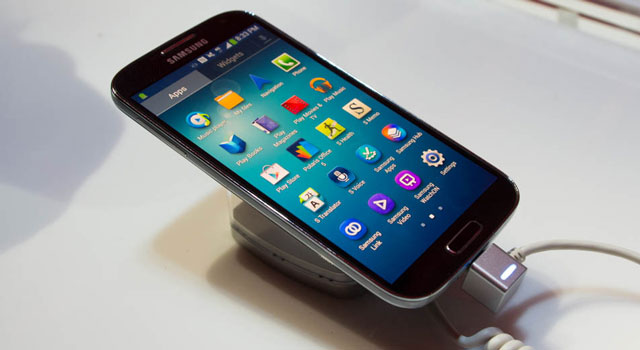Samsung Electronics’ Galaxy S4 takes the features that made its predecessor, the S3, such a runaway success and improves on them quite substantially.
In only a handful of years, Samsung has gone from being one of many manufacturers vying for the Android crown to almost the only game in town at the lucrative top end of that market.
With the Galaxy S4, the Korean electronics behemoth is set to reinforce that position, not only because it’s snapped up every spare page and billboard for advertising, but because the device appears to be, well, quite excellent.
Gone is the flimsy plastic rear cover of the S3 in favour of a reinforced polycarbonate shell. And the S3’s 4,8-inch 720p display has made way for a 5-inch, 1080p Super Amoled screen that adjusts to ambient conditions to provide the best possible image using light and RGB sensors.
Across the board, Samsung has upped the hardware specifications, but it’s really the overhauled software that makes the device stand out.
Hovering a finger over the lock screen lights up the corresponding portion of the display and hints at Samsung’s new “air gestures”. Not only does the ability to hover over an on-screen item mean an additional way to interact with the device, but it makes other things possible, like operating the phone with gloves on or answering a call by swiping a hand above the screen.
Like the front-facing camera’s ability to realise when you’re not looking at the screen (and thus pause a video, resuming it when your gaze returns), these new contactless gestures aren’t simply gimmicks designed to bolster the spec sheet. They have myriad practical applications.
For example, the combination of controls that work by proximity alone and a window on a new smart cover means its possible to see pertinent information like the name of an incoming caller while also being able to answer the call, all without opening the cover or touching the phone.

Other changes are more subtle. The notification bar at the top of the screen is now translucent and its content has been slightly rearranged. Menus, meanwhile, now contain options for even more granular control of settings and functions for old features like S Voice — Samsung’s voice recognition software, which seems vastly improved — and even for new ones like gesture controls.
S Voice has also prompted another new feature, S Translator. With support for 10 languages at launch, S Translator can translate text or voice in any of the supported languages. So, for example, a user can type a phrase in English and have the S4 say it in French. Combine this with a selection of common phrases, and S Translator becomes an invaluable travel tool.
The S4’s camera software has also seen major revisions and additions. A new drama mode captures 100 shots in four seconds and then allows users to create a composite with a selection of those shots all in a single image. Another setting makes it possible to record an audio clip to affix to a still image.
By allowing users to employ both of the S4’s cameras simultaneously, there’s also the option to include yourself in a shot you’re taking with the rear-facing camera, or include yourself in a video the same way. It also means you can share the view of both cameras in a video call.
Group Play, another newcomer, makes it possible to turn up to eight Samsung devices into the individual components of a multi-speaker sound system.
S Health, meanwhile, will tether with the forthcoming S Band, Samsung Scale or compatible heart rate monitors and track all manner of metrics, producing useful charts in the process.
There’s even a competitor to BlackBerry’s “Balance” functionality that makes it possible to separate work and business content and assign them different security setting, a feature Samsung calls Knox.
From our time with the S4, one thing is clear: Samsung has mastered the consumer retail game. It’s learnt how to bring out a product a year while still maintaining the crucial “wow factor” with each outing. — (c) 2013 NewsCentral Media
- See also: Here it is: the Samsung Galaxy S4




